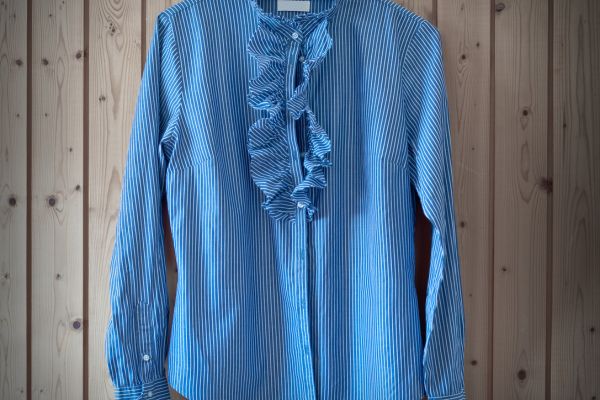Frida Kahlo Where do we begin?
We all know her image. We are familiar with her trademark braided hair, brightly coloured dresses, and monobrow. Maybe so familiar that she feels it herself. Everyone seems to want a piece.
In her life, she was well-known but became an icon in her death. The obsession with Frida in pop culture began shortly after her death. The “second coming” of Frida started in 1983, Hayden Herrera’s biography launching her into the spotlight. Since then, the 20th Century artist’s striking images have cast a long shadow on the fashion industry, with Dolce & Gabbana, Jean Paul Gaultier, and Dolce & Gabbana all taking inspiration from her. Givenchy even sent Frida-inspired gowns down the runway in 2010, 56 years after her passing.
Also Read: https://www.fashiongrow.co.uk/jonathan-anderson-is-fashions-creative-polymath/
Salma Hayek’s 2002 portrayal of Frida got the artist to the big screen. Two years later, a Pandora’s Box of her personal belongings was unlocked and displayed at La Casa Azul in Coyoacan. In 2018, some of the most important and famous pieces from her wardrobe were displayed at the V&A in London. This may have helped to increase her popularity. Roland Mouret, Designer of Spring 2018, dedicated his show to her. Mattel also launched a Frida Barbie in March 2018 to celebrate International Women’s Day. A Frida snapchat filter was also available. There was even a Frida snapchat filter.
Frida was able to express herself through clothing and self-adornment. She was very much “making herself up,” to quote the V&A. If we pay attention to her history and understand her philosophy, if she doesn’t limit us to a tacky T-shirt, barbie doll, or socks, we can learn a lot about her.
Her aesthetic helped her to control her identity as a woman, a painter and a Marxist, as well as as as a Mexican-American, bi-racial person, and person with disabilities. It was not accidental. Each part of her artwork had a philosophy behind. This makes Frida Kahlo all the more inspiring. Although she was unique and truly singular, we can still take inspiration from her and learn valuable lessons about self-creation.
Three lessons in personal style with Frida Kahlo
1. Celebrate your roots
Frida was a proud Mexican. While still in school, she was deeply involved with Mexican culture and politics as well as social justice issues. Her school encouraged the idea of indigenismo, “a new sense Mexican identity that takes pride in the country’s indigenous heritage and seeks to eliminate the colonial mindset that considers Europe superior to Mexico.” This love for her country and her attachment to its culture and history manifested itself in her appearance.
Frida was a creative, experimental woman who was interested in her clothes before she became an artist. Photographs of her young years show that she experimented with her self-image from an early age. Frida is seen in her father’s three piece suit in a family portrait. Frida experimented with gender expression through her clothes without feeling forced to conform to any rigidly gendered aesthetic. She was able to wear ostensibly masculine clothing once, but she was able to change to the more feminine clothing worn by indigenous Mexican women at another time.
2. Wear what you believe
Since her childhood, Frida was an avowed Marxist. Frida had formed a group to debate philosophy, put on plays and discuss the Russian classics. Many of these members would become some of the most prominent figures in the Mexican intellectual elite. They were known as the Cachuchas (“the title caps”) Her ideology was embedded in every fiber of her being. She claimed that 1910 was the first year in Mexico of the Revolution.
3. Be your own artist
Frida was often her subject in her own art. About a third of Frida’s paintings are self portraits, partly due to the long hours she spent alone recovering. Her famous quote was: “Themes of pain, being injured, fractured and mutilated are often present” As a child, she had been affected by Polio which made her right leg shorter than her left. At the age of 18, she was in a bus accident that resulted in several deaths. Frida suffered severe injuries that were almost fatal. Her ribs were broken, her collarbone was fractured and both legs were broken. She was also impaled through her pelvis using a handrail. Her dream of becoming an obstetrician and having children was shattered by the accident.
She also lost her ability to become a doctor. Her dedication to indigenismo was evident in the traditional blouses, loose skirts, and elaborate hairstyles. Hettie Judah, curator at the V&A Claire Wilcox, discusses Frida’s dual purpose in a New York Times article. “The last thing that you’d think of when you first saw Frida was her disabilities.” It was distracting. Her flamboyance was distracting. The boxy shape her huipil blouses could be worn loosely over a plaster cast or back brace, while her long flowing skirts could conceal her wasted leg, and her motion could hide her limp.


